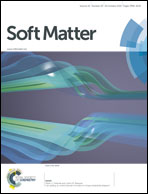Development of surfactant coacervation in aqueous solution
Abstract
Coacervation is a phenomenon in which a colloidal dispersion separates into two immiscible liquid phases: a liquid rich in colloidal phase in equilibrium with another diluted liquid phase. Surfactant coacervation here refers to coacervation whose main components are surfactants with low molecular weights. Over the past two decades, surfactants have been greatly developed and studies on coacervation in systems of novel surfactants have been reported. This review summarizes the development of coacervation occurring in monomeric surfactants, one-head and two-tail surfactants, gemini surfactants and their mixtures. The effects of surfactant molecular structure and external conditions on critical conditions for coacervation, structures of precursors and coacervates, and their relationships are described. The effects of inorganic salts, alcohols and organic salts on surfactant coacervation are also reviewed.


 Please wait while we load your content...
Please wait while we load your content...